This year sees a number of significant anniversaries being celebrated.
Brian Sharpe recounts the story of one of Britain’s heritage lines which has now been running trains for 40 years.
The Nene Valley Railway has its origins in the boom in new preserved steam railway schemes in the 1960s but in this case the line was not in itself a prime candidate for reopening, and it came about through a variety of unique circumstances and developed in a very different way to its contemporaries.

The London & Birmingham Railway built what was to become the southern end of the West Coast Main Line out of Euston. As part of the LBR’s expansion, a branch was opened by the company from Blisworth on the WCML to Peterborough in 1845, under the name of the Northampton & Peterborough Railway.
This line briefly formed Peterborough’s first rail link with the capital, taking the long way round to Euston via Northampton until superseded by the GNR line from King’s Cross which opened in 1850.
Enjoy more Heritage Railway reading in the four-weekly magazine.
Click here to subscribe & save.
The LBR made an end-on connection with the Eastern Counties Railway from East Anglia and used the ECR’s Peterborough station in exchange for the ECR having running powers from there to Blisworth, giving it access to the north of England – an even longer way round! In 1846 though, the LBR merged with the Grand Junction Railway and the Manchester & Birmingham Railway to form the London & North Western Railway.
In 1852, the GNR completed its direct route north of Peterborough to Doncaster forming the company’s section of the East Coast Main Line to Edinburgh, and the LNWR line along the valley of the River Nene declined in importance.
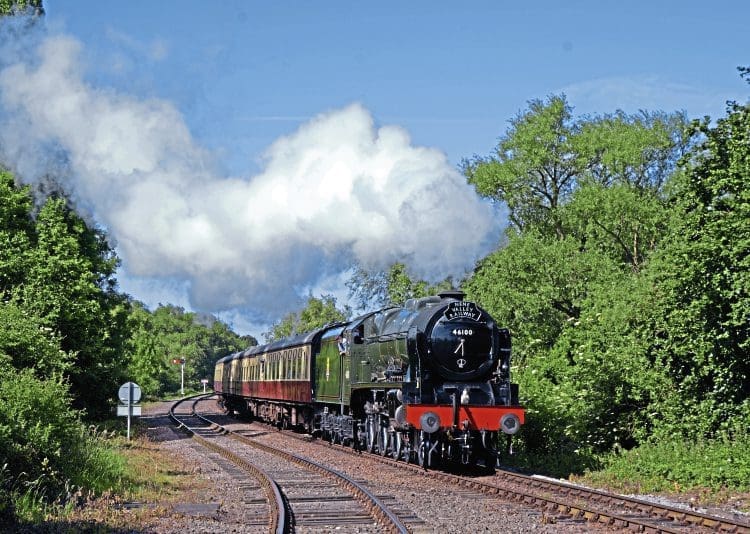
The GNR crossed over the LNWR at right angles and no direct connection was ever built between the two. The Eastern Counties Railway became part of the Great Eastern Railway in 1862.
The Midland Railway however, ended up with a line from Leicester to Peterborough by quite a circuitous route through Melton Mowbray, Oakham and Stamford. It ran alongside the GNR for several miles but rather than using the GNR station or even building one alongside it, it joined the LNWR route and its trains used Peterborough East.
The LNWR expanded steadily and on November 1, 1879, built a line from Rugby through Market Harborough which joined the Northampton to Peterborough line at Yarwell Junction, west of Wansford, giving routes from Peterborough to both Northampton and to Rugby, the latter now becoming the more important route as it formed the main rail link from Birmingham to East Anglia.
Loop line from Fletton
There was initially no direct connection between the LBR and GNR but a 1¼ mile loop line from Fletton on the GNR to Longueville Junction on the LNWR was built later by the GNR which has seen more closures and reopenings than most.

The GNR also had a branch from Stamford to Wansford and using GNR/LNWR joint line routes could run trains from Peterborough to Leicester via Wansford. A major sugar beet processing plant was opened alongside the Fletton branch which kept the branch open into the 1970s.
The LNWR became part of the London Midland & Scottish Railway and eventually part of the London Midland Region of British Railways. At the Grouping in 1923, the original ECR station became Peterborough East while the GNR’s station became Peterborough North.
Regional boundary changes after Nationalisation in 1948 saw LNWR and MR routes east of Seaton and Manton junctions become part of the Eastern Region. The Beeching report recommended closure of the Peterborough to Northampton line and passenger services ceased on July 13, 1964, several intermediate stations having closed much earlier.
The Rugby line closed to passengers onJune 6, 1966 with through services diverted to run via Leicester which was somewhat longer but served more centres of population. It was certainly not the end of either of the LNWR routes out of Peterborough though.
A Peterborough clergyman and steam enthusiast, the Rev Richard Paten purchased a BR Standard 5MT 4-6-0 No. 73050 from BR at the end of BR steam in 1968. His intention was that it would be a static exhibit as a tribute to Peterborough’s great railway heritage but it led to the Peterborough Railway Society being formed to look after it.
The engine had three different homes in the city during a long, slow period of restoration but it quickly became clear that the members of the PRS wanted to return it to steam, not just give it a coat of paint.
With a number of preserved steam railways now being opened around the country, the society members felt that one of the closed lines in the Peterborough area might make a good heritage line except that the obvious one, the LNWR, had not quite closed…
The Northampton line was still used by a coal train delivering coal to Oundle three days a week while the Rugby line saw a daily train from the ironstone quarries at Nassington. By 1969 though, both of these traffic flows were expected to be short-lived.
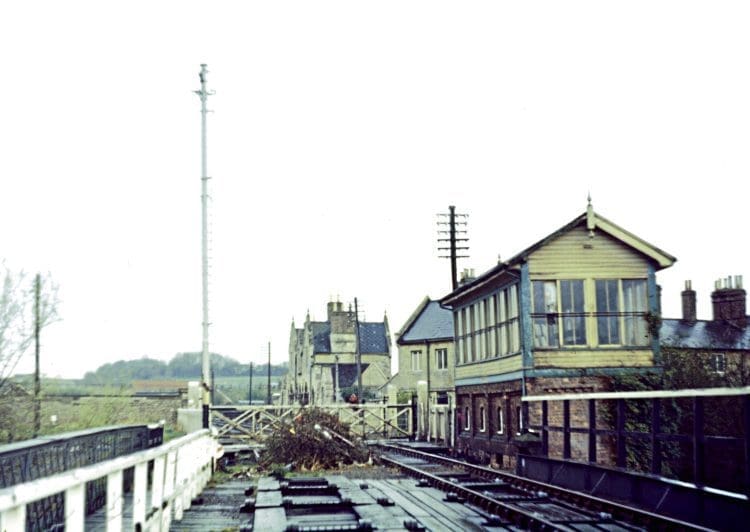
Meanwhile Peterborough had been designated as a ‘New Town’ where a doubling of the population was planned as part of a plan to ease overcrowding in the London area. The scheme for the city’s expansion was in the hands of the newly-formed Peterborough Development Corporation.
Country park
The corporation’s plans included a large country park west of the city through which passed the River Nene and the railway. Houses could not be built anywhere near the river so not only was the rail route safe but if it became a preserved steam railway passing through the country park, it could complement the park itself, carry people out from the city and give the Rev Paten’s 5MT somewhere to stretch its legs…
To cut a long story short, the ironstone trains from Nassington ceased on January 1, 1970, and the Oundle coal trains in 1972, after which BR had no use for the line. The PDC acquired the line as far as the river bridge at Wansford and leased the trackbed to the PRS.
The society had steamed No. 73050 in 1971 by which time it was based at the British Sugar Corporation factory at Woodston, adjacent to the Nene Valley line, although by then not connected to it.
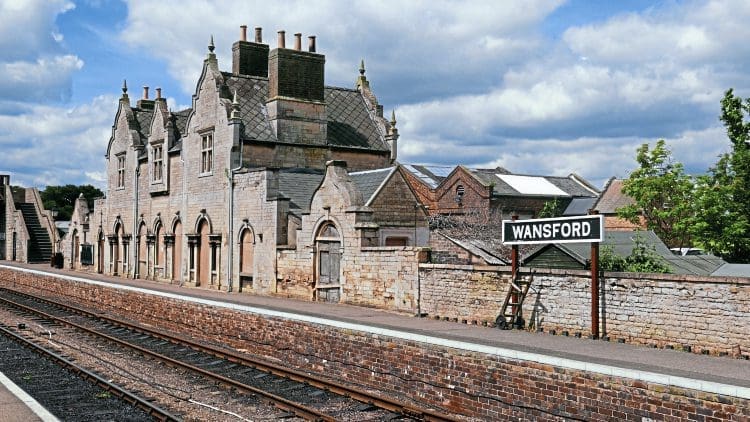
There were a number of problems to overcome before the Nene Valley Railway could be opened as a preserved steam railway and its volunteer members would have to adapt to the idea of building and operating a railway, not just restoring one steam engine.
The obvious operating base had to be Wansford where the station had closed in 1957 but the substantial building still stood, along with the LNWR signalbox. A separate arrangement had to be made to lease the station site (but not the station building which was in private hands) as it was outside the PDC’s jurisdiction.
There were just two tracks and no platforms, so a station, sidings and locomotive shed would have to be built. Although some stock was being assembled at Woodston, a length of track on the one-time Fletton branch had to be reinstated to give this stock access to the line it was going to work on.
In 1973-76, occasional open days were held at Wansford with passengers being given short rides to the west, through the tunnel to the site of Yarwell Junction. BR left the two parallel single lines as far as this but removed a viaduct on the Nassington line and two river bridges on the Oundle line, making any future westward extension from Yarwell unlikely.
A major issue was that the PDC considered that the land close to the city centre was valuable for industrial purposes so the society could not have that section. The track was lifted and the eastern terminus of the line was established at a new site, called Orton Mere where there had not previously been a station.
Transported by road
An intermediate station was built at the site of the LNWR’s Overton Waterville, but called Ferry Meadows, giving access to the new Nene Park and its facilities. As the society could not use the original Wansford station building, a wooden station building was obtained from Barnwell, a station further down the line beyond Oundle, which was transported by road in one piece and installed on the reinstated second platform at Wansford.
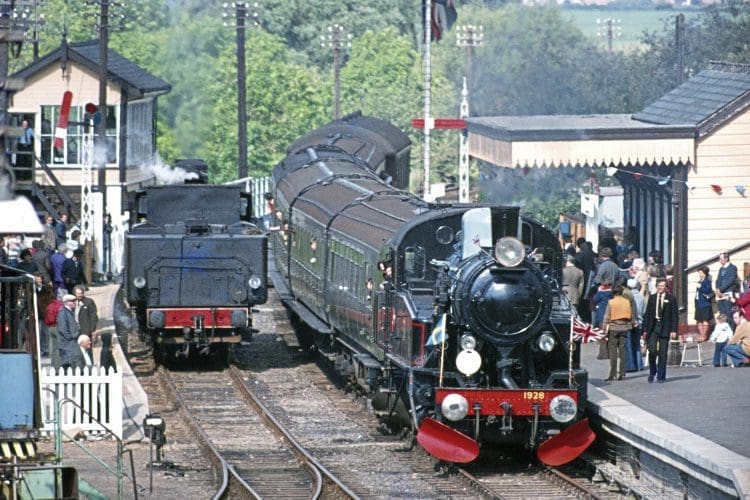
The Nene Valley Railway opened for business over the five miles from Wansford to Orton Mere on June 1, 1977. Sadly, No. 73050’s boiler certificate had expired and it played no part in the first few years’ services.
The PRS had acquired a very basic railway with virtually no lineside structures and rather than go down the route of buying worn-out BR coaches and derelict engines from Barry which would take years to restore, it went down a very different route. Its services were initially operated using predominantly Continental locomotives and stock.
Serviceable steam engines could be purchased from continental Europe as could good-quality air-braked high-capacity coaching stock. The NVR was unique among the UK heritage lines being opened at the time in that it was easily adapted to accommodate such engines and stock.
New platforms had to be built so they were simply built to sufficient clearance, while there were only five bridges on the line of which four were high enough and the other one was demolished.
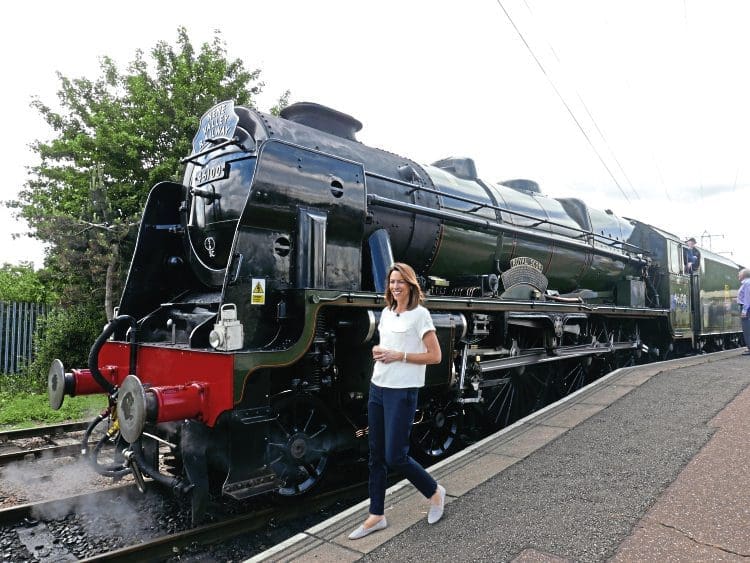
A surprising number and variety of Continental steam engines were bought by various individuals and groups, many of which made the NVR their home, although none remain serviceable at the present time.
In 1976, an exception was made in that a locomotive had arrived from Barry scrapyard. The Battle of Britain Locomotive Society brought its SR Battle of Britain Pacific No. 34081 92 Squadron to the line and a small team set about the long, laborious task of restoring it; a project which was to take 22 years.
With the line having been a main line with a high axle-loading and now able to accommodate ‘Berne-gauge’ locomotives and stock, the light Pacific was not to be the largest engine ever to run on the line and over the years it has played host firstly to BR Standard Pacific No. 70000 Britannia but even bigger visitors including Flying Scotsman, three A4 Pacifics, Duchess of Hamilton, Blue Peter and in recent years, Tornado.
Once Peterborough’s expansion project was complete and the city’s population had doubled, the PDC was wound up as it had no further function. It had never sold any of the trackbed east of Orton Mere for industrial use, and fortunately not for housing either.
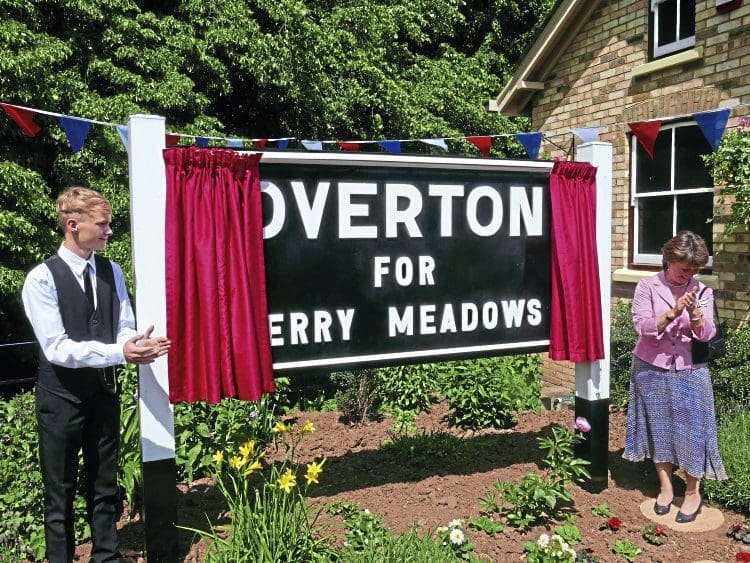
The NVR finally acquired the trackbed and set about extending its line into the city, a distance of 1½ miles. Laying the track was relatively easy and a station was built alongside the site of what was once the LNWR’s locomotive shed.
It would undoubtedly have been preferable to have gone under the GN main line to the site of Peterborough East station which would have given the railway an obvious city centre presence but this was not practicable as BR had slewed the track of the former MR line and there was insufficient space left.
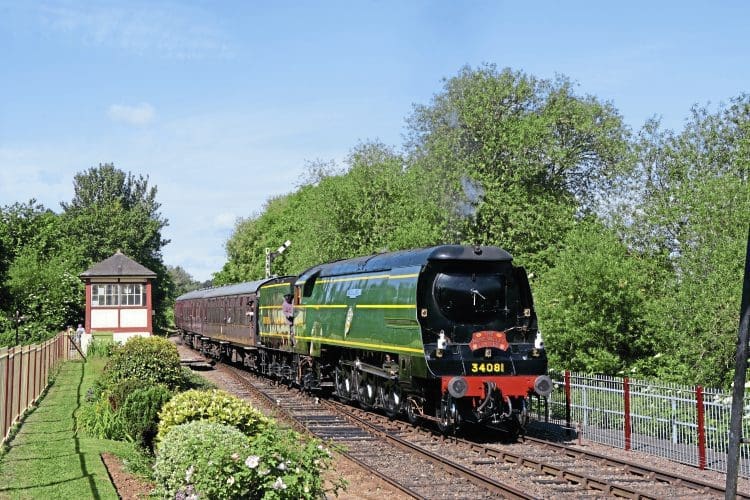
Neither could a connection with the main line be reinstated because of the superelevation of the main line track.
Opened by Prince Edward
The line was extended east from Orton Mere into Peterborough and this section was opened in 1986 by HRH Prince Edward. The line still ran west from Wansford to Yarwell although this section was rarely used but train services were extended to here to give a total running line of 7½ miles.
The Fletton branch from Longueville Junction was eventually secured by the railway and this continues to form the line’s connection with Network Rail, being used for stock movements and occasional railtours.
The branch has seen Deltic diesels, the Venice Simplon Orient-Express Pullman, LNER Pacifics such as No. 60163 Tornado and most recently, LMS 4-6-0 No. 46100 Royal Scot.

To celebrate the 40th anniversary of the railway’s opening, a gala weekend was held on June 3/4, with Royal Scot the star visiting engine along with Deltic diesel No. 55022 Royal Scots Grey running as No. 55018 Ballymoss.
The home fleet was represented by recently-restored SR Battle of Britain Pacific No. 34081 92 Squadron and of course Thomas.
THOMAS
IS Flying Scotsman still the most famous steam locomotive in the world? Or is it a little blue tank engine? When the Peterborough Railway Society moved the Standard 5MT No. 73050 to the British Sugar Corporation factory at Woodston, the extensive sidings still saw considerable rail traffic during the sugar beet season.
Wagons arriving from BR over the Fletton branch were shunted by a Ruston diesel with Hudswell Clarke 0-6-0T No. 1800 of 1947 as standby engine. In practice at this time, the diesel seemed to be a permanent failure and the green-liveried tank engine did most of the shunting.
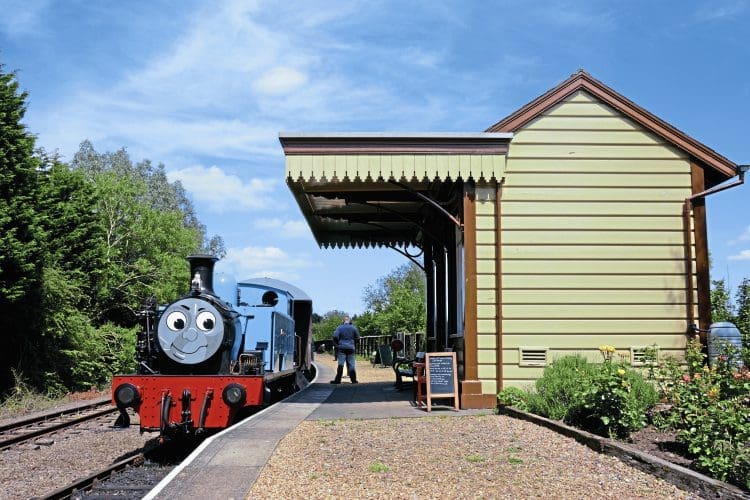
The PRS held an open day at the factory in July 1971 when No. 73050 appeared in steam for the first time and as an additional attraction, it was agreed that the factory’s tank engine could be painted in bright blue livery, with red lining and carry a face on its smokebox. It was even possible to arrange for the Rev Awdry who had written the Thomas the Tank Engine books to unveil the name Thomas on the side tank.
The engine continued to shunt the factory sidings during the following sugar beet season, still in blue livery but without his face. When he finally retired, the BSC presented him to the PRS and he has been a major attraction on the Nene Valley Railway for much of the time since.
OCTOPUSSY
The Nene Valley Railway has been a popular choice for a wide variety of filming assignments over the years; its Continental locomotives and stock giving it a unique selling point in this respect.

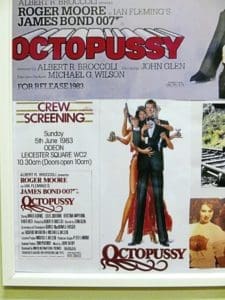
Undoubtedly one of the biggest filming jobs ever carried out on the railway was for the James Bond film Octopussy, starring Roger Moore and filmed over an eight-week period in 1982.
Scenes included a sword fight on top of a moving train, a Mercedes saloon on rails crashing head-on into a moving train, and another Mercedes being catapulted into the air and landing in the river.
It also involved the railway’s volunteers in a unique civil engineering exercise – laying a set of points in a tunnel, not normal railway operating practice, and the points were quickly removed after the filming.
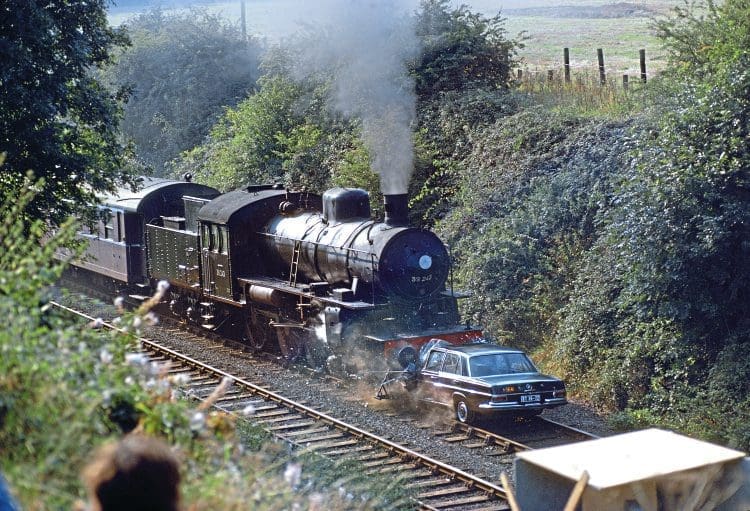
For the 40th anniversary on June 1, Roger Moore was invited to return to the railway to join in the celebrations but sadly he died a few days before the event. Two of the Bond girls from 1982 were able to attend though.
Read more News and Features in Issue 246 of HR – on sale now!
Archive enquiries to: Jane Skayman on 01507 529423 – [email protected]
Advert
 Enjoy more Heritage Railway reading in the four-weekly magazine. Click here to subscribe.
Enjoy more Heritage Railway reading in the four-weekly magazine. Click here to subscribe.




